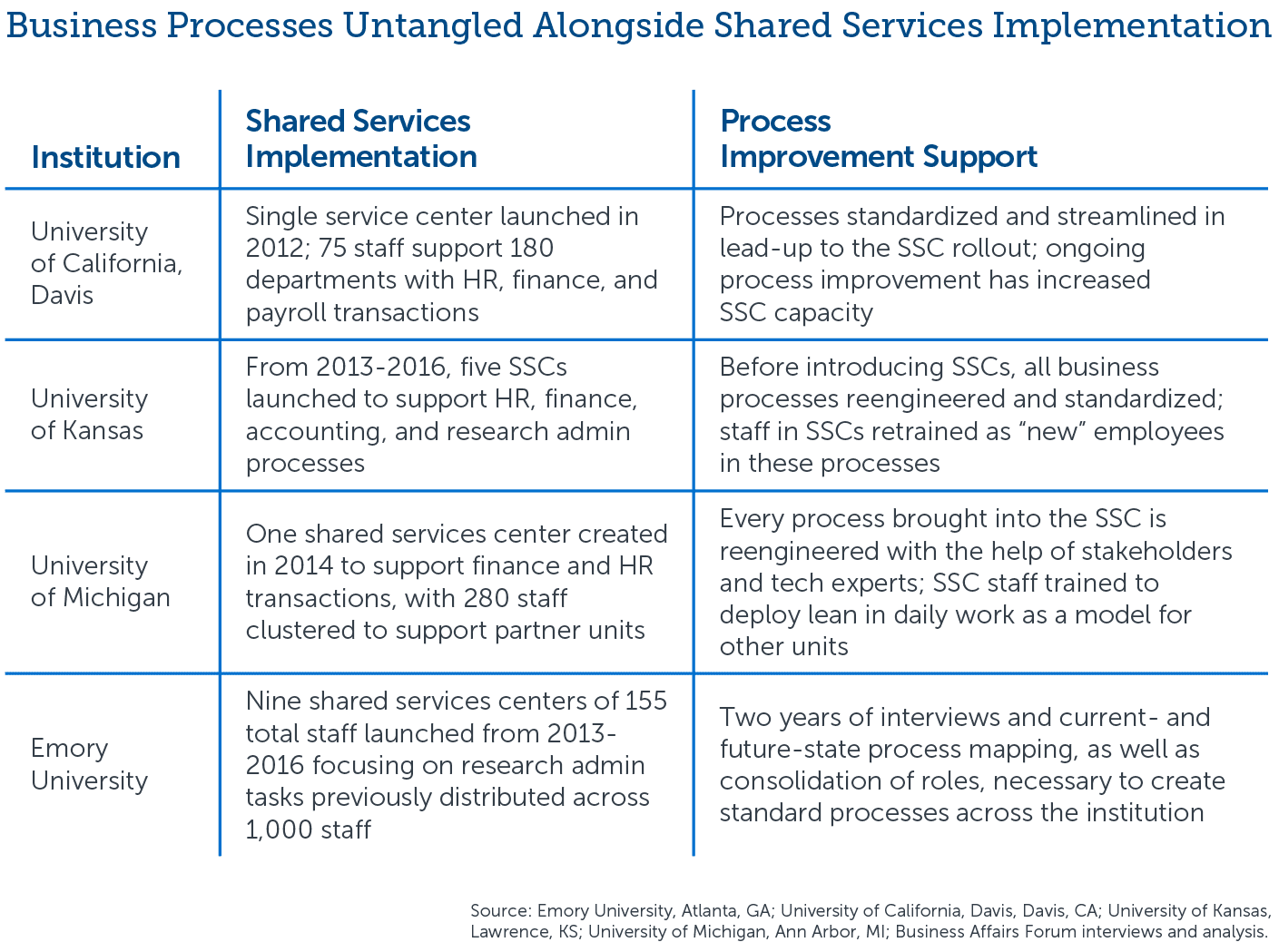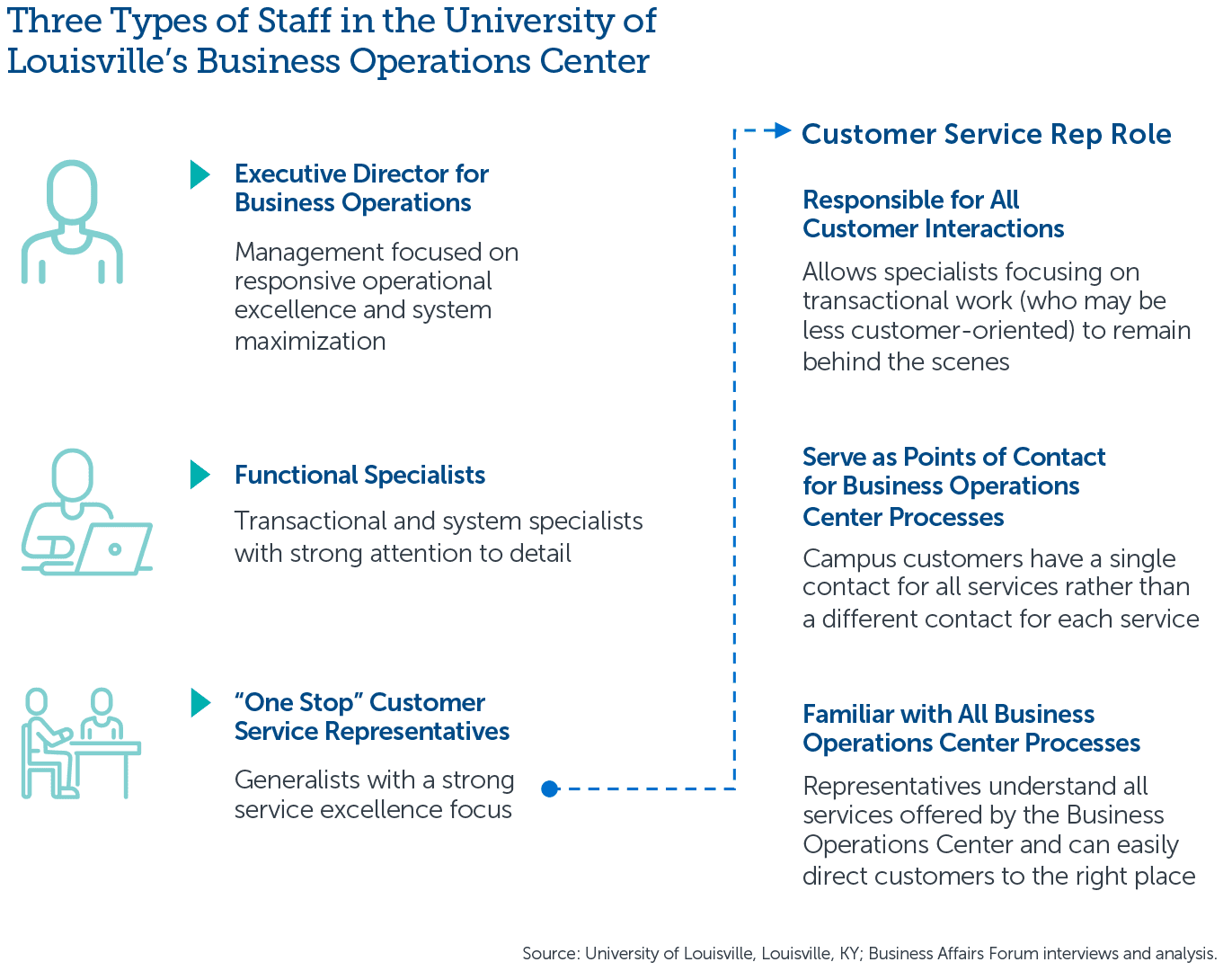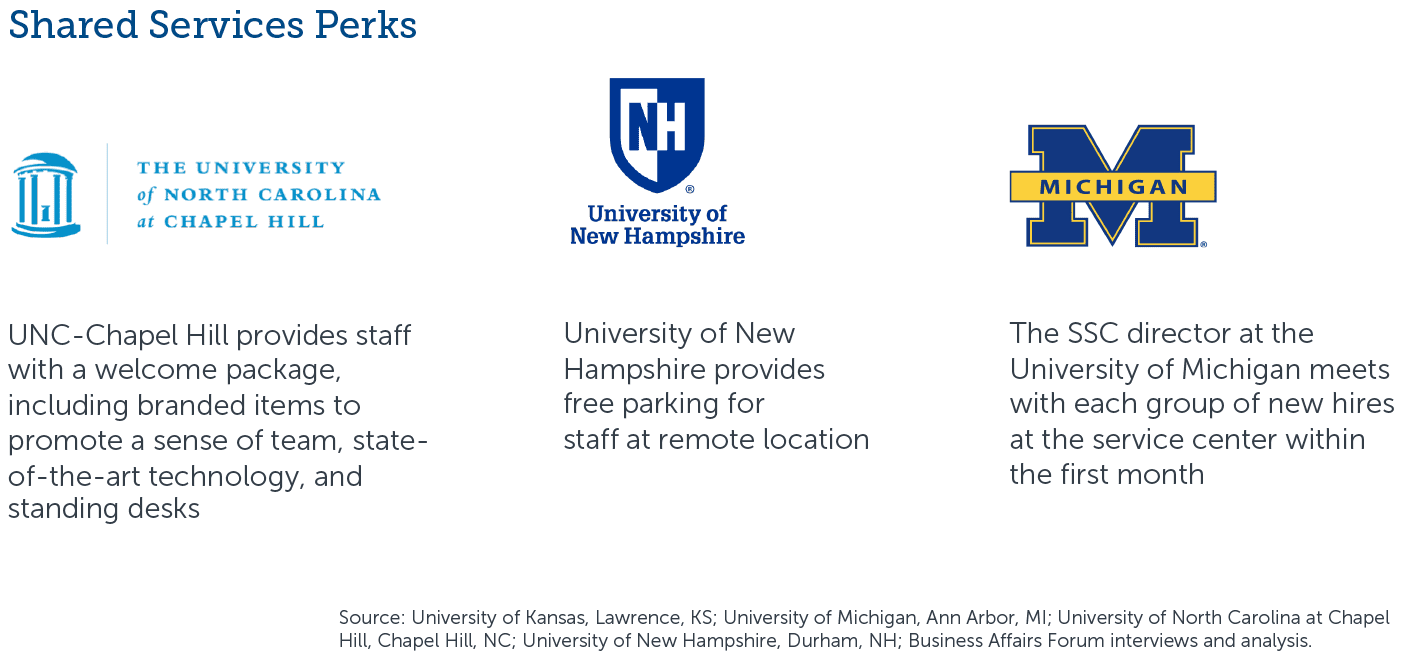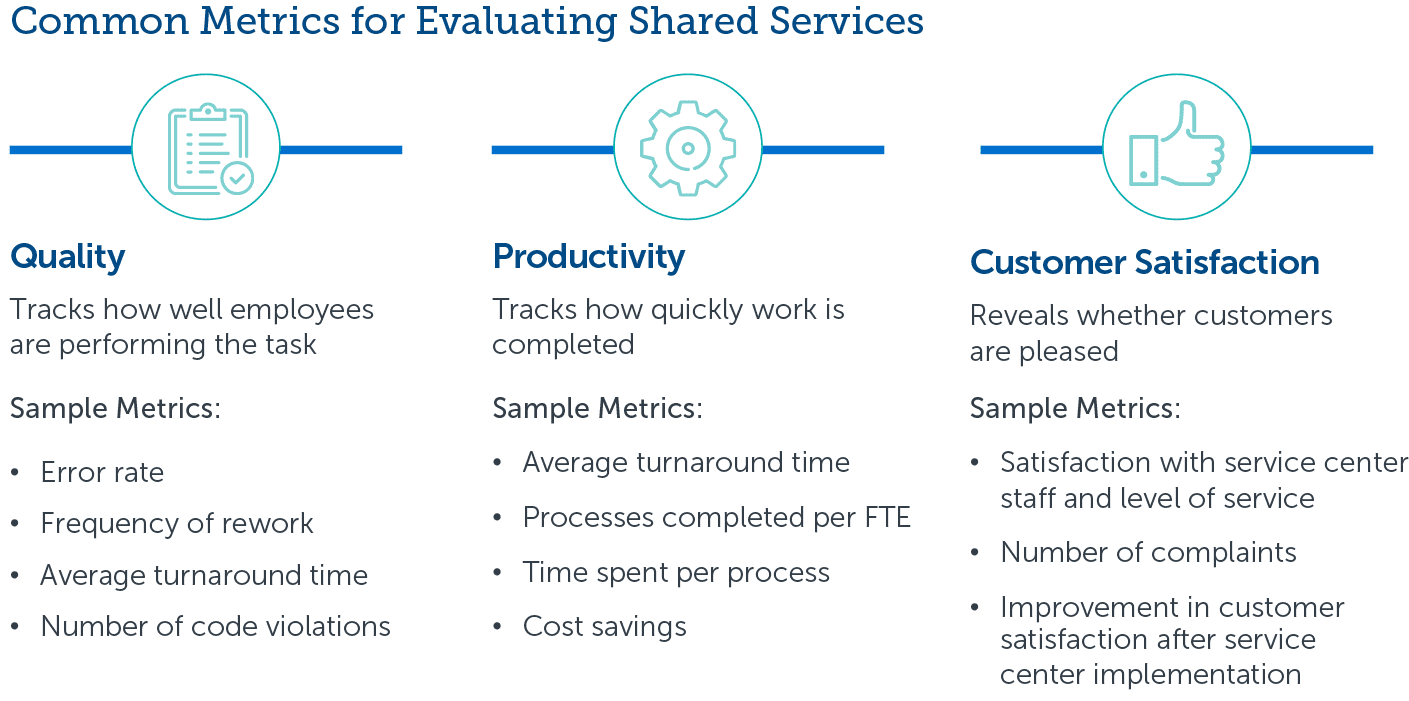Ease the Transition to Shared Services with a Plan for Change Management Hurdles
Designing an organizational model that reflects campus priorities is an important first step in any shared services journey. But bringing this vision to life is more difficult than moving lines on an org chart. Crafting a shared services implementation plan tailored to the culture of your campus can help to reduce the impact of common change management hurdles.

Deploy a multi-channel communication strategy
Most campus leaders understand the need for thoughtful communication during shared services migrations. But too often they rely on one single message unlikely to meet the needs of diverse stakeholder groups.
An effective shared services communications plan should account for varied stakeholder segments, drawing on both standardized components for all audiences and tailored components for specific constituencies.


When introducing shared services, communicate 10 times more than you think to be necessary. In other words, there's no such thing as too much communication.
Chief Business Officer
Private Research University
Codify business processes and staff responsibilities
Consolidating staff positions without standardizing the underlying work undercuts financial savings and quality improvements that can stem from shared services. Campus leaders should assemble practitioners and subject-matter experts to redesign standard business processes alongside a shared services implementation.

-
Research highlights
Institutions that simplify, standardize, and (where possible) automate business processes as part of shared services implementations have the best chances of long-term success—and savings.
In fact, the most effective shared services implementations share a common characteristic: Leaders invested in untangling business processes in the lead up to organizational change.

Why would you want a shared services center if you're not going to simplify and standardize the work that's being done?
Chief Financial Officer
Large Public University
Focus on customer service
Faculty often equate physical proximity of support staff with service quality. Consequently, they may fear that “distant” shared services hubs will prioritize central projects, controls, and costs over academic unit needs.
Incorporating two-way service level conversations into the implementation process—in the form of service level agreements, governance boards, and communication protocols—ensure that shared services units are responsive to the service expectations of client units.

-
Research highlights
Successful implementation of shared services hinges on faculty’s perception that they will receive the same, high-touch support in the new organizational model as they received before the change.
To ensure that high-quality service is an essential part of the shared services experience, some campuses have hardwired this expectation into their organizational models. The University of Louisville designated “customer service representatives” in its shared services organization to serve as on-demand points of contact for all customers.

Incrementally introduce shared services on campus
Shared services has a bad reputation in higher education in part because early movers followed the private-sector “lift and shift” model, moving administrative personnel from units to the new organization all at once.
In most cases, top-down mandates and mass migrations to shared services are neither desirable nor practical. Instead, design a multi-year plan to migrate service delivery and staff to the new model. Gradual implementation proves to stakeholders that shared services can function effectively, garnering greater support over time.

Dispel fears of the unknown among staff
Both staff who remain in distributed units and those who transition to a shared services center may feel anxious about stepping into the unknown.
Uncertainty about changing roles and responsibilities can undercut buy-in and spark damaging rumors about what is waiting on the other side of implementation. Providing transition pathways and offering support for staff (and unit leaders) to plan for the new model can calm these fears.

-
Research highlights
During large-scale shared services implementations, all staff benefit from support and transition planning. While unit leaders may intuitively solicit HR support in designing new roles and responsibilities for their teams, staff moving to a shared services center are frequently overlooked.
Experienced campuses recommend offering perks to smooth the transition into new roles. Consider three examples of “shared services perks” below.

Prove the ROI of shared services
Campuses often struggle to document the financial savings, cost avoidance, and efficiency gains stemming from shared services. But in order to demonstrate the value of consolidation and identify areas for ongoing improvement, administrative leaders must continually monitor the performance of shared services.
Institutions should first select a handful of relevant key performance indicators (KPIs) for the activities performed by shared services. Tracking and sharing them via a simple dashboard or other annual reports keeps stakeholders informed about the center’s operations and its commitment to ongoing efficiency and service enhancements.


This resource requires EAB partnership access to view.
Access the roadmap
Learn how you can get access to this resource as well as hands-on support from our experts through Strategic Advisory Services.
Learn More